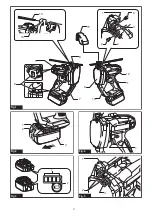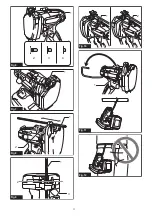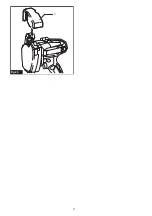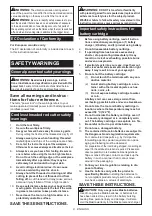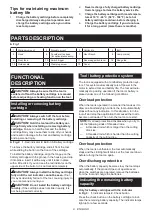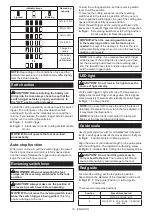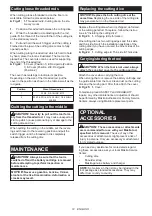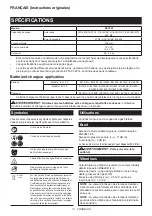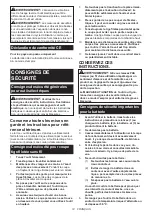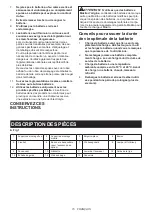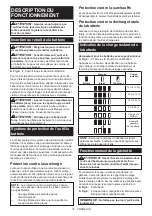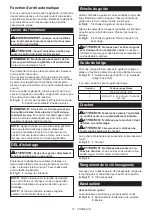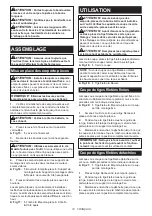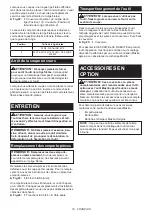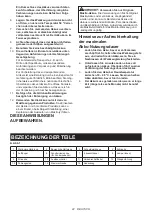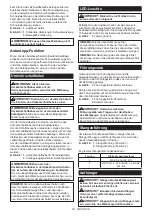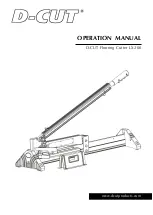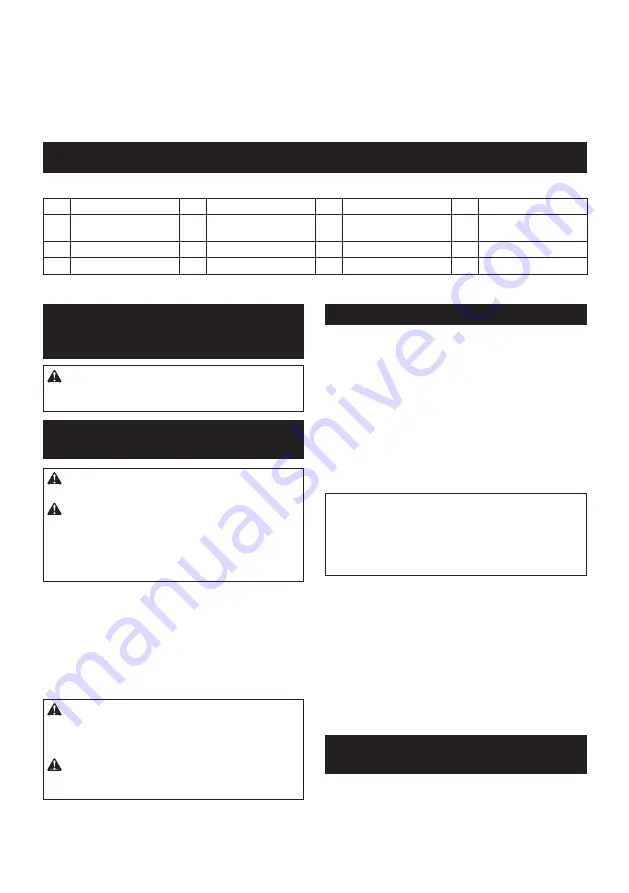
9 ENGLISH
Tips for maintaining maximum
battery life
1.
Charge the battery cartridge before completely
discharged. Always stop tool operation and
charge the battery cartridge when you notice
less tool power.
2.
Never recharge a fully charged battery cartridge.
Overcharging shortens the battery service life.
3.
Charge the battery cartridge with room tempera-
ture at 10 °C - 40 °C (50 °F - 104 °F). Let a hot
battery cartridge cool down before charging it.
4.
Charge the battery cartridge if you do not use
it for a long period (more than six months).
PARTS DESCRIPTION
►
Fig.1
1
Stationary mount
2
Movable mount
3
Cutting die
4
Bolt
5
Hook
6
Shoulder strap base
(for optional accessory)
7
Hex Wrench
8
Lamp (inside)
9
Front face
10
Switch trigger
11
Reversing switch lever
12
Rod guide
13
Guide scale
14
Clamping screw
15
Cover
-
-
FUNCTIONAL
DESCRIPTION
CAUTION:
Always be sure that the tool is
switched off and the battery cartridge is removed
before adjusting or checking function on the tool.
Installing or removing battery
cartridge
CAUTION:
Always switch off the tool before
installing or removing of the battery cartridge.
CAUTION:
Hold the tool and the battery car-
tridge firmly when installing or removing battery
cartridge.
Failure to hold the tool and the battery
cartridge firmly may cause them to slip off your hands
and result in damage to the tool and battery cartridge
and a personal injury.
►
Fig.2:
1.
Red indicator
2.
Button
3.
Battery cartridge
To remove the battery cartridge, slide it from the tool
while sliding the button on the front of the cartridge.
To install the battery cartridge, align the tongue on the
battery cartridge with the groove in the housing and slip
it into place. Insert it all the way until it locks in place
with a little click. If you can see the red indicator on the
upper side of the button, it is not locked completely.
CAUTION:
Always install the battery cartridge
fully until the red indicator cannot be seen.
If not,
it may accidentally fall out of the tool, causing injury to
you or someone around you.
CAUTION:
Do not install the battery cartridge
forcibly.
If the cartridge does not slide in easily, it is
not being inserted correctly.
Tool / battery protection system
The tool is equipped with a tool/battery protection sys
-
tem. This system automatically cuts off power to the
motor to extend tool and battery life. The tool will auto
-
matically stop during operation if the tool or battery is
placed under one of the following conditions.
Overload protection
When the tool is operated in a manner that causes it to
draw an abnormally high current, the tool automatically
stops without any indication. In this situation, turn the
tool off and stop the application that caused the tool to
become overloaded. Then turn the tool on to restart.
NOTE:
Overload protection activates when you try to
cut the following kinds of threaded rods.
— A threaded rod which is larger than the cutting
dice size.
— A threaded rod which is harder than the cutting
capacity of the cutting dice.
Overheat protection
When the tool is overheated, the tool automatically
stops and the LED light will blink. Let the tool cool down
before turning the tool on again.
Overdischarge protection
When the battery capacity becomes low, the tool stops
automatically. If the product does not operate even
when the switches are operated, remove the batteries
from the tool and charge the batteries.
Indicating the remaining battery
capacity
Only for battery cartridges with the indicator
►
Fig.3:
1.
Indicator lamps
2.
Check button
Press the check button on the battery cartridge to indi
-
cate the remaining battery capacity. The indicator lamps
light up for a few seconds.
Summary of Contents for DSC102
Page 2: ...13 14 5 7 12 9 11 10 6 15 8 1 2 3 4 4 Fig 1 1 2 3 Fig 2 1 2 Fig 3 1 Fig 4 1 2 3 Fig 5 2 ...
Page 3: ...1 2 3 4 Fig 6 1 Fig 7 1 2 Fig 8 2 1 3 Fig 9 2 1 Fig 10 1 Fig 11 Fig 12 3 ...
Page 4: ...1 Fig 13 1 2 3 2 Fig 14 1 Fig 15 1 1 2 2 5 3 6 4 Fig 16 1 2 3 4 Fig 17 1 Fig 18 4 ...
Page 5: ...1 2 Fig 19 1 2 Fig 20 1 2 Fig 21 4 1 2 3 Fig 22 1 2 Fig 23 1 2 3 Fig 24 5 ...
Page 6: ...1 Fig 25 6 ...
Page 79: ...79 ...


